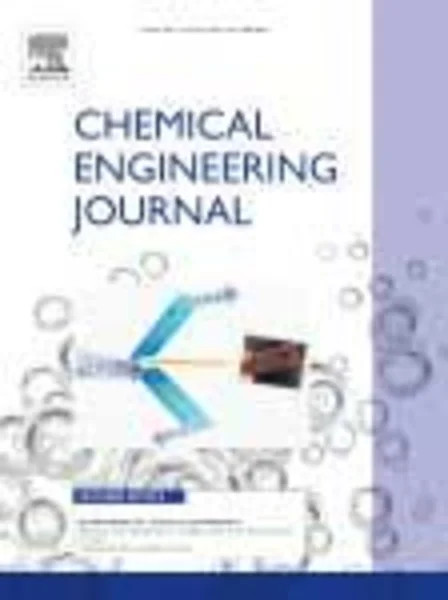-
chlorination and bromination kinetics of emerging contaminants in aqueous systems
جزئیات بیشتر مقاله- تاریخ ارائه: 1392/01/01
- تاریخ انتشار در تی پی بین: 1392/01/01
- تعداد بازدید: 891
- تعداد پرسش و پاسخ ها: 0
- شماره تماس دبیرخانه رویداد: -
second-order rate reaction constants of micropollutants with chlorine are essential for evaluating their removal efficiencies from water during chlorine disinfection. in this study, the reactions of five selected emerging contaminants with unavailable kinetic data (benzotriazole, n,n-diethyl-m-toluamide or deet, chlorophene, 3-methylindole, and nortriptyline hcl) with chlorine and bromine have been investigated, and their apparent second-order rate constants have been determined as a function of the ph. for the chlorination process, the intrinsic rate constants for the elementary reactions of the ionized and neutral species were also evaluated. the sequence of reaction rates was methylindole > chlorophene > nortriptyline hcl > benzotriazole > deet. the bromination of the selected emerging contaminants in ultra-pure water provided exactly the same sequence of reaction rates as in the chlorination process, although higher values of rate constants. the efficiency of the chlorination process for the degradation of these ecs when present in several aqueous systems (surface water from a public reservoir, and two effluents from municipal wastewater treatment plants) was investigated. during wastewater or drinking water treatment, chlorine is a good option for the degradation of methylindole, and in a lower extent for chlorophene and nortriptyline. however, it is not a suitable oxidant for the abatement of benzotriazole and deet. finally, chlorination in the presence of bromide revealed that low bromide concentrations enhanced slightly the degradation of the selected compounds during chlorine oxidation.
مقالات جدیدترین رویدادها
-
استفاده از تحلیل اهمیت-عملکرد در ارائه الگوی مدیریت خلاقیت سازمانی و ارائه راهکار جهت بهبود
-
بررسی تاثیر ارزش وجوه نقد مازاد بر ساختار سرمایه شرکت های پذیرفته شده در بورس اوراق بهادار تهران
-
بررسی تأثیر سطح افشای ریسک بر قرارداد بدهی شرکت های پذیرفته شده در بورس اوراق بهادار تهران
-
بررسی تأثیر رتبه بندی اعتباری مبتنی بر مدل امتیاز بازار نوظهور بر نقد شوندگی سهام با تأکید بر خصوصی سازی شرکت ها
-
تأثیر آمیخته بازاریابی پوشاک ایرانی بر تصویر ذهنی مشتری پوشاک ایرانی (هاکوپیان)
-
تحلیل و بررسی رفتار ویسکوالاستیک قیر اصلاح شده با اتیلن وینل استات با استفاده از مدل برگر
-
عوامل موثر بر جذب سرمایه گذاری مستقیم خارجی (fdi) در ایران
-
بررسی نقش اجتماعی-اقتصادی همگرایی منطقه ای در توسعه ی یکپارچه فضایی
-
بررسی پایداری دینامیکی سد شهر چای ارومیه با استفاده از مدل رفتاری پیشرفته
-
a review of deep learning methods in the study, prediction and management of covid-19
مقالات جدیدترین ژورنال ها
-
مدیریت و بررسی افسردگی دانش آموزان دختر مقطع متوسطه دوم در دروان کرونا در شهرستان دزفول
-
مدیریت و بررسی خرد سیاسی در اندیشه ی فردوسی در ادب ایران
-
واکاوی و مدیریت توصیفی قلمدان(جاکلیدی)ضریح در موزه آستان قدس رضوی
-
بررسی تاثیر خلاقیت، دانش و انگیزه کارکنان بر پیشنهادات نوآورانه کارکنان ( مورد مطالعه: هتل های 3 و 4 ستاره استان کرمان)
-
بررسی تاثیر کیفیت سیستم های اطلاعاتی بر تصمیم گیری موفق در شرکتهای تولیدی استان اصفهان (مورد مطالعه: مدیران شرکتهای تولیدی استان اصفهان)
-
وجوب احتیاط از منظر اخباریون
-
شناسایی الزامات و نیازمندی های موفقیت مدیریت راهبردی منابع انسانی در صنعت خودرو
-
مطالعه تطبیقی ارزیابی هزینه جرم در حقوق کیفری و فقه شیعه
-
appraisal of bearing capacity and modulus of subgrade reaction of refilled soils
-
towards energy efficient onsite wastewater treatment




سوال خود را در مورد این مقاله مطرح نمایید :